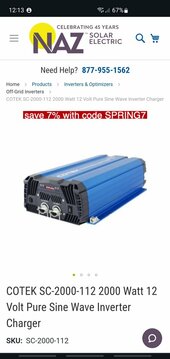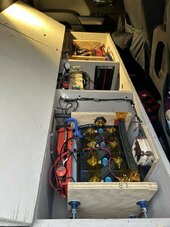RV Pilgrims
New Member
Hi. I'm looking for a recommendation for an inverter-charger for our 30 amp 2023 Lance travel trailer. Current configuration:
Features in order of importance:
- 390 Watts of solar (one Renogy 200 watt, one factory installed GoPower 190 watt)
- GoPower Solar controller (which I may replace)
- 2 - 100 Ah Battle Born LiFePO4 Batteries
- Renogy 40 Amp DC-DC charger (wired to our truck alternator)
Features in order of importance:
- Compatible with our standard Progressive Dynamics power panel. The built in converter will be disconnected. It cannot be ground-neutral bonded.
- Charges the batteries
- Runs the HighPointe RV microwave (which draws about just under 1900 watts when running)
- Runs the Norcold absorption fridge when we are driving. The batteries are being recharged by solar and the DC-DC charger.
- Remote shut off switch
- Low vampire draw
- Manufacturer support
- Remote monitoring panel
- Built-in MPPT solar controller
- Bluetooth or WiFi management
- Eco mode
Last edited:







